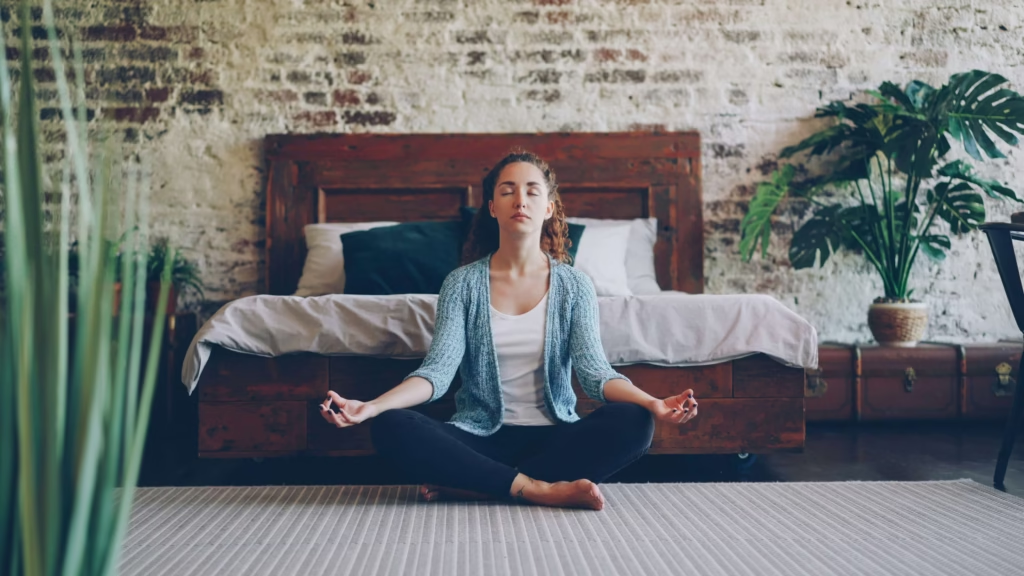In the complex labyrinth of our minds, the lines between productive thought and mental turmoil can often blur. We might find ourselves caught in a relentless cycle of worry, where our thoughts race and our heart pounds, and it can be hard to pinpoint the cause. Is this a moment of anxiety, or am I just overthinking? While the two are deeply intertwined and often appear together, they are distinct psychological experiences with different roots, symptoms, and coping strategies. Understanding the difference between them is the first vital step toward breaking free from mental spirals and reclaiming your inner peace.
This blog will take a deep dive into the fundamental difference between anxiety and overthinking. We’ll provide detailed examples to clarify each concept, offer actionable tips and daily practices to cope with both, and explore how well-being tools like mindfulness can help you untangle your mind.
Relevant blog to read: Understanding and Overcoming Crippling Anxiety
What Is Overthinking? The Endless Loop of Thought
Overthinking is a cognitive process characterized by an excessive, repetitive, and often unproductive cycle of thoughts. It’s a mental habit of replaying the past or rehearsing the future, dissecting every detail and outcome, without ever arriving at a conclusion or a useful course of action.
- Nature: Primarily a mental process. It’s about getting stuck in your head.
- Focus: It can be focused on anything—a past conversation, a future event, or a simple decision.
- Key Phrase: “I can’t stop thinking about it.”
- Feelings: Frustration, mental exhaustion, regret, confusion.
Detailed Examples of Overthinking:
- Scenario 1 (Past Event): You sent a work email and for hours afterward, you reread it, imagining different ways you could have phrased it better, worrying about how your boss might interpret a specific word.
- Scenario 2 (Future Event): You have a dinner party planned for next week. You spend all weekend obsessing over the menu, worrying that a dish might not be perfect, imagining the worst-case scenario (e.g., someone gets food poisoning).
- Scenario 3 (Decision Making): You need to choose a new phone. You spend days reading every review and watching every YouTube video, paralyzed by the fear of making a suboptimal choice, and ultimately never buying one.
Relevant blog to read: Overcoming Overthinking: How to Break Free from the Endless Loop
What Is Anxiety? The Body’s Alarm System
Anxiety is not just a thought process; it’s a physiological response. It is the body’s alarm system—the “fight or flight” response—being triggered by a perceived threat, whether real or imagined. While it involves a mental component (worry), its most defining characteristic is the presence of physical symptoms.
- Nature: A physiological and emotional response. It’s about getting stuck in your body’s alarm system.
- Focus: A future-oriented state of fear, dread, or apprehension.
- Key Phrase: “I feel scared/on edge/unable to breathe.”
- Feelings: Fear, dread, panic, nervousness.
Detailed Examples of Anxiety:
- Scenario 1 (Social Fear): The thought of walking into a room full of people triggers a rapid heartbeat, sweaty palms, and shortness of breath. You feel an intense need to escape.
- Scenario 2 (Performance Stress): Before a work presentation, you feel nauseous, your voice trembles, and your mind goes blank, even though you have rehearsed it perfectly.
- Scenario 3 (Pervasive Dread): You wake up in the morning with a sense of dread for no specific reason. Your stomach is in knots, and you feel a general, vague apprehension about the day ahead.
Relevant blog to read: Understanding Anxiety: Types of Anxiety Disorders & Their Impact on Well-being
The Intertwined Connection: How They Fuel Each Other
The most important distinction is that anxiety and overthinking are a vicious cycle. Overthinking can lead to anxiety, and anxiety can lead to more overthinking.
- Overthinking → Anxiety: The endless mental rehearsal of a potential negative future event (overthinking) can trigger the physical symptoms of the body’s alarm system, leading to a state of anxiety.
- Anxiety → Overthinking: When your body is in an anxious state, your mind often searches for a reason for the physical symptoms, leading to a frantic, worried thought process (overthinking) that seeks to find the source of the dread.
Untangling the Mind: How to Cope with Both
The strategies for coping with anxiety and overthinking often overlap, but each requires a slightly different focus.
For Overthinking (The Mental Battle):
- Set a “Worry Window”: Designate 15 minutes each day for dedicated worry and overthinking. When an overthinking thought arises outside of this window, tell yourself, “I’ll think about that later, during my worry time.”
- Externalize Your Thoughts: Use a journal to do a “brain dump.” Write down every thought you have without judgment or editing. This gets the thoughts out of your head and onto a page, often reducing their power.
- Practice Thought-Stopping: When you catch yourself in an unproductive loop, a quick mental command like “Stop!” or “Pause” can interrupt the pattern, creating a space to re-engage with the present.
- Engage in a Distracting Task: Actively redirect your focus. Do a puzzle, listen to a podcast, organize a drawer, or engage in a physical activity.
- Challenge Your Thoughts: Use a method like the CBT thought record to challenge the validity of your overthinking. Ask: “Is this 100% true?” “What’s the evidence for this thought?” “What’s a more helpful perspective?”
For Anxiety (The Physical & Emotional Battle):
- Mindful Breathing: This is the most powerful tool for calming the body’s alarm system. Practice deep, rhythmic breathing to slow your heart rate and signal to your body that it is safe.
- Grounding Techniques: Use your five senses to ground yourself in the present moment, pulling your focus away from the vague, future-oriented dread.
- Mindful Movement: Engage in physical activity. A brisk walk, a run, or even dancing can help your body release the excess adrenaline and cortisol associated with anxiety.
- Prioritize the Basics: Ensure you are getting adequate sleep, eating nutritious food, and staying hydrated. Your physical health is the biological foundation for your emotional regulation.
- Practice Self-Compassion: Acknowledge your anxiety without judgment. Say to yourself, “I’m feeling anxious right now, and that’s okay. I’ll be kind to myself.”
The Unstuck Mind: Well-being Practices that Help
Integrating these practices into a daily routine can prevent both anxiety and overthinking from taking hold.
- Mindfulness: It’s the ultimate tool for both. For overthinking, it helps you recognize the mental loop. For anxiety, it helps you observe the physical sensations without panic. Daily meditation trains your attention to stay in the present.
- Journaling: A powerful way to combat both. It externalizes overthinking, making it manageable, and provides a safe space to process and name anxious feelings.
- Physical Health: A healthy body (through sleep, nutrition, and exercise) is the most resilient against the physical and mental impacts of stress and anxiety.
- Affirmations: Use affirmations to build a new inner narrative. “I am in control of my thoughts,” “I can find my calm,” “I am safe and supported.”
- Setting Boundaries: Assertiveness and clear boundaries reduce the external demands and triggers that contribute to both overthinking and anxiety.
Relevant blog to read: The Science Behind Breathwork: How 5 Minutes a Day Can Reduce Anxiety
Final Thoughts: From Spiral to Stillness
The mind’s spiral of overthinking and the body’s alarm of anxiety are powerful forces that can hijack our peace. But they are not insurmountable. By learning to distinguish between the two and applying targeted strategies—calming the body with breath and grounding, and untangling the mind with journaling and intentional focus—you can begin to break their hold. With consistent practice and a compassionate approach, you can transform your relationship with these challenges, fostering a calmer, more present, and more resilient mind.
Frequently Asked Questions
A. Overthinking is a purely mental, thought-based activity. Anxiety is a physical and emotional alarm system that comes with bodily symptoms like a racing heart and shortness of breath.
A. Yes. You can overthink something without feeling the physical symptoms of anxiety. Conversely, you can experience anxiety (e.g., a panic attack) without a clear, specific overthought pattern. However, they very often appear together.
A. No, overthinking is a habit or a cognitive pattern. However, it is a key symptom of many anxiety disorders and depression, and if persistent, may require professional help.
A. Engage your body. Physical activity, a “brain dump” into a journal, or the 5-4-3-2-1 grounding technique can effectively interrupt the thought loop and pull you into the present.
A. Listen actively without offering solutions. Validate their feelings. Offer specific, practical help. Encourage them to try a gentle, calming activity with you.
Author’s note
Thank you for taking the time to focus on your well-being and for being your own cheerleader in this journey called life. I truly appreciate you for choosing to invest in yourself today, and I’m honored that you spent a part of your day here. Remember, every small step you take matters, and you’re doing an amazing job. Keep going—you’ve got this!
💛 Support Our Mission
If you find our content helpful and inspiring, consider supporting us with a small donation.
Your kindness helps us grow, write more meaningful articles, and reach more hearts.
You can donate via PayPal — every bit counts! 🙏






One Comment